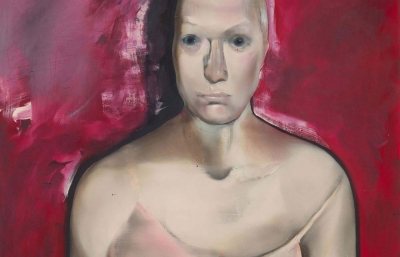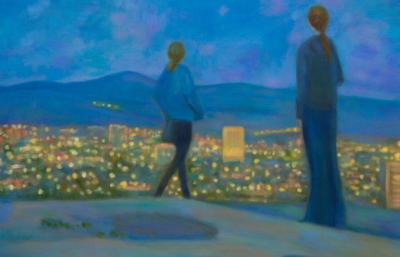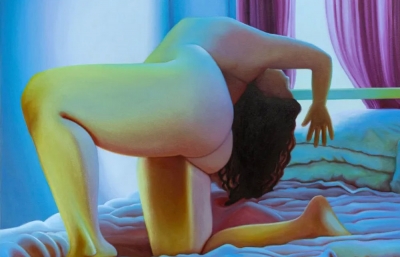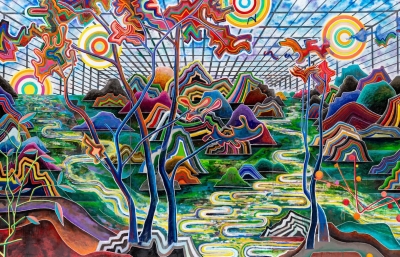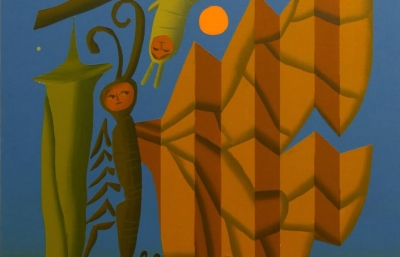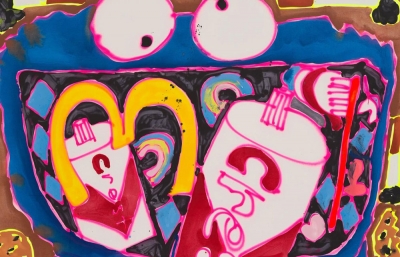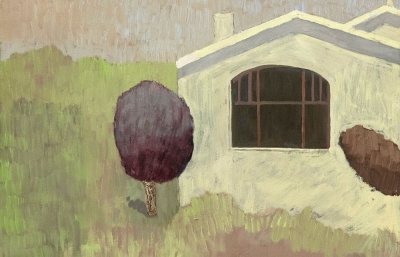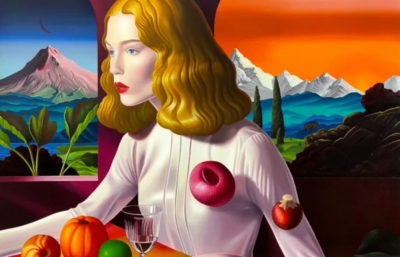One of the more unheralded stories from the meteoric rise of Takashi Murakami as both a purveyor of cool culture and the world of influencers and brand collaborations is that he comes from geek culture. He himself, perhaps in the midst of his cultural icon status, has said, "We define subculture as a cool culture from abroad, but otaku is an uncool indigenous culture. My mentality came from those animation geeks." In the world of Hypebeasts and collector culture, this idea is important to keep in mind: this is all rather geeky, and Murakami's love of animation and manga is quite the same as the obsessiveness of sneaker and apparel culture that he now finds himself in the center of.
Perhaps that is why it's refreshing to see Murakami's new show at Perrotin in Tokyo, Superflat Doraemon. Not so much that this is a back to basics show, but a re-emphasis on those early Murakami influences, finding ways to combine his love of underground geek culture with adoration of Edo period Japanese history and art.
From Japanese art critic, Yoshio Suzuki:
In creating works of contemporary art based on the Edo period paintings and manga/anime culture, Murakami established the concept and art movement, which he coined “Superflat." “Flat” derives from the two-dimensionality of Edo period paintings as well as manga/anime. The concept of “flat” can be further expanded and used in a broader sense, suggesting how the categorization of subculture and high culture (or popular culture) is essentially meaningless in the sense that there should be an equality in expression, in that the expressions in fine arts or advertisement should be of equal value.
The first issue of Doraemon fans’ magazine Motto! Doraemon [More! Doraemon] (published by Shogakukan, 2005) includes an interview of Murakami, who had adopted Doraemon as an element in the Little Boy exhibition. In the interview, Murakami acknowledges that Doraemon is a story that seamlessly blends reality with dreams. The exhibition showcases original drawings with hand-written notes by Fujiko F. Fujio’s assistants, along with the anime and plush toys that derived from the manga. Murakami goes on to mention that, despite the notion in Japan of manga and anime being of lesser value than works of art, on the contrary, this is the manner in which art functions.
Murakami’s coherent philosophy is evident in his comment from 2002, as he released the painting of Doraemon characters and his own characters “Kaikai” and “Kiki” flying over a field of flowers with “hopters”, created on request for THE Doraemon Exhibition - Irai : anata no Doraemon wo tsukutte kudasai (Fujiko F. Fujio) [Request: Please make your own Doraemon (Fujiko F. Fujio)]. “When I painted this, I concentrated on remembering my childhood, so that I could meet my honest self. This work is set in the early summer at the beginning of 1970s. I was able to dive straight into the time when I played with my brother in the empty lands of an industrial area.”





